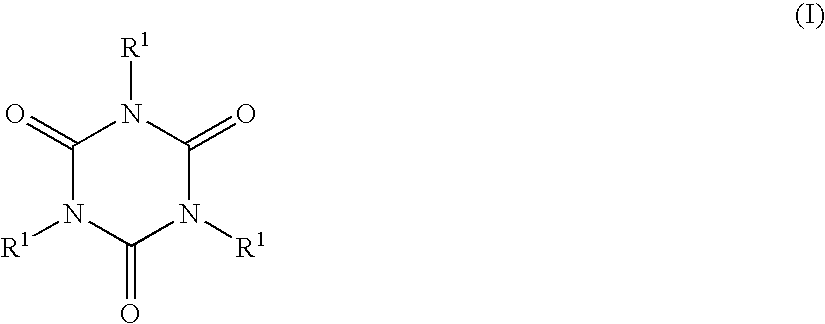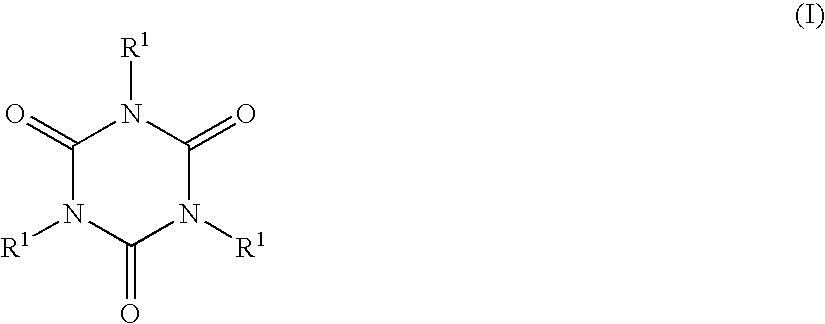Curing composition and method for preparing same, light-shielding paste, light-shielding resin and method for producing same, package for light-emitting diode, and semiconductor device
- Summary
- Abstract
- Description
- Claims
- Application Information
AI Technical Summary
Benefits of technology
Problems solved by technology
Method used
Image
Examples
synthesis example 1
Synthesis of triallyl isocyanurate-1,3,5,7-tetramethylcyclotetrasiloxane Reaction Product, which is a Component (B)
[0460] A 5-L separable flask was charged with 1.8 kg of toluene and 1.44 kg of 1,3,5,7-tetramethylcyclotetrasiloxane, and heated until the inside temperature arrived at 104° C. Thereto was added dropwise a mixture of 200 g of triallyl isocyanurate, 1.44 mL of a xylene solution of platinum-vinylsiloxane complex (containing 3% by weight of platinum) and 200 g of toluene. The resulting mixture was heated under reflux in an oil bath at 120° C. for 7 hours. Then, 1.7 g of 1-ethynyl-1-cyclohexanol was added. The unreacted portion of 1,3,5,7-tetramethylcyclotetrasiloxane and the toluene were distilled off under reduced pressure. 1H-NMR revealed that the product was the reaction product resulting from part of the SiH groups of 1,3,5,7-tetramethylcyclotetrasiloxane with triallyl isocyanurate (hereinafter referred to as partial reaction product B1, SiH value: 8.2 mmol / g, allyl v...
example 4
[0464] The light-shielding pastes obtained in Examples 1 to 3 were each applied onto a polyphthalamide resin molding while controlling the film thickness using a tape as a spacer, and then cured at 100° C. for 1 hour to form a light-shielding layer. A die for die shear testing was bonded to each light-shielding layer with an adhesive prepared in the manner mentioned below.
[0465] The adhesive layer was formed by heating at 60° C. for 6 hours, 70° C. for 1 hour, 80° C. for 1 hour, 120° C. for 1 hour, 150° C. for 1 hour and 180° C. for 30 minutes, in that order, followed by curing.
example 1
MEASUREMENT EXAMPLE 1
[0471] The test specimens obtained in Example 4 and Comparative Example 1 were evaluated for adhesion by die shear testing. Used as the die shear tester was Dage's multi-purpose bondtester 2400. The temperature was 23° C., a 50-kgf load cell was used, and the testing speed was 83 μm / sec. The results obtained are shown in Table 1.
PUM
| Property | Measurement | Unit |
|---|---|---|
| Temperature | aaaaa | aaaaa |
| Temperature | aaaaa | aaaaa |
| Temperature | aaaaa | aaaaa |
Abstract
Description
Claims
Application Information
 Login to View More
Login to View More - R&D
- Intellectual Property
- Life Sciences
- Materials
- Tech Scout
- Unparalleled Data Quality
- Higher Quality Content
- 60% Fewer Hallucinations
Browse by: Latest US Patents, China's latest patents, Technical Efficacy Thesaurus, Application Domain, Technology Topic, Popular Technical Reports.
© 2025 PatSnap. All rights reserved.Legal|Privacy policy|Modern Slavery Act Transparency Statement|Sitemap|About US| Contact US: help@patsnap.com



